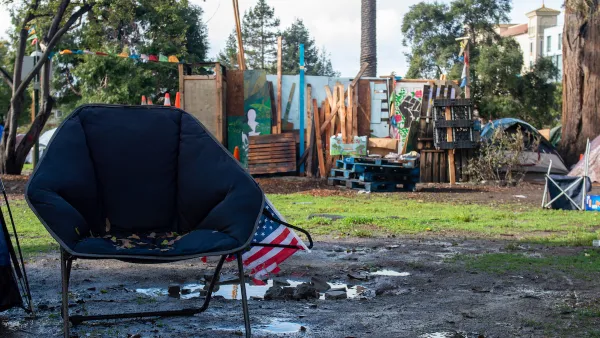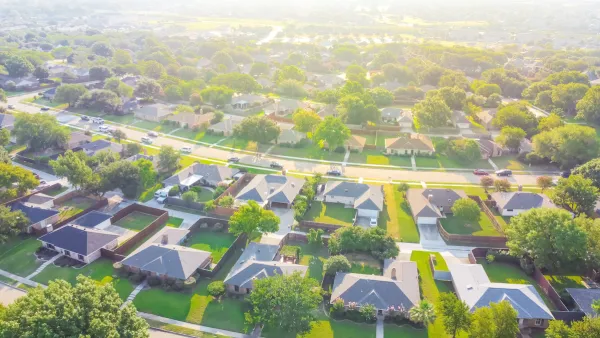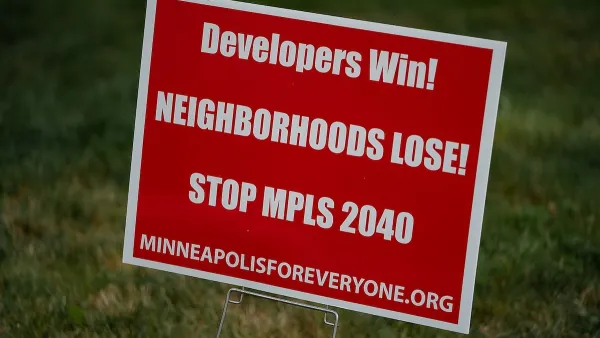Has George Lucas discovered the ultimate anti-NIMBY weapon? Hint: It's not a lightsaber

By Keli Tianga
George Lucas seems to be on a mission to be an affordable housing developer—or at least to use affordable housing to get back at his cranky neighbors.
The Star Wars creator recently filed a pre-application with the Marin County Community Development Agency, located in San Rafael, Calif., to build an affordable housing development on property he partially owns (he deeded the majority to the Marin County Open Space District over a decade ago) in Lucas Valley (not named for him). This comes on the heels of his proposal several years ago to build a new production studio on the same site, which his neighbors fought against until he withdrew it.
Lucas, backed by a group of developers and funders, then proposed an affordable housing development in 2012, but that project fizzled out. He is back, this time with the intention of funding the project himself.
So, is this the ultimate NIMBY payback, or actual altruism?
Because I am an optimistic conspiracy theorist, I like to think that Lucas never really intended to build his studio on the site at all, but used the proposal to "clear the path," as it were, to this project, the one he really wants to execute, by giving neighbors a vision of something they'd like even less up front, so affordable housing, in a county notorious for being unaffordable, feels like a compromise. Could this be the new stealth anti-NIMBY strategy?
Now, common sense tells me this is probably not true, but this is a small victory for affordable housing nonetheless, as Lucas' celebrity brings some attention to the issue. Especially in California, where all matter of housing, not just affordable, is expensive and out of reach for the average person.
Of course the affordabiltiy goals of the project are modest. According to the website of Petaluma Ecumenical Properties, the senior affordable housing developer that is partnered with Lucas on the project, the development would include 100 or so units for seniors at a variety of income levels and 120 units for people with annual incomes at 80 percent of the area’s average median income—which for Marin County would mean $65,700 to $101,400, clearly not what most of us think of as in need of affordable housing (though that may be changing and there are arguments about this). Indeed, the cover of Lucas's proposal uses the term "Work Force" housing, which we've taken issue with on Rooflines for its distinction between working people like teachers, police officers, and nurses, and "other" working people, namely, the working poor, some of whom presumably also work in Marin. In fact, in 2011, a report issued as an initiative of the Non-Profit Housing Association of Northern California found that 60 percent of people who work in Marin commute in from outside the county, traveling farther on average than any other workforce in the Bay Area. Marin's lack of affordable housing was cited as a primary cause, with two-thirds of Marin workers earning less than the $56,000 per year needed to afford to rent a one-bedroom apartment...
FULL STORY: Affordable Housing Strikes Back

National Parks Layoffs Will Cause Communities to Lose Billions
Thousands of essential park workers were laid off this week, just before the busy spring break season.

Retro-silient?: America’s First “Eco-burb,” The Woodlands Turns 50
A master-planned community north of Houston offers lessons on green infrastructure and resilient design, but falls short of its founder’s lofty affordability and walkability goals.

Delivering for America Plan Will Downgrade Mail Service in at Least 49.5 Percent of Zip Codes
Republican and Democrat lawmakers criticize the plan for its disproportionate negative impact on rural communities.

Test News Post 1
This is a summary

Test News Headline 46
Test for the image on the front page.

Balancing Bombs and Butterflies: How the National Guard Protects a Rare Species
The National Guard at Fort Indiantown Gap uses GIS technology and land management strategies to balance military training with conservation efforts, ensuring the survival of the rare eastern regal fritillary butterfly.
Urban Design for Planners 1: Software Tools
This six-course series explores essential urban design concepts using open source software and equips planners with the tools they need to participate fully in the urban design process.
Planning for Universal Design
Learn the tools for implementing Universal Design in planning regulations.
EMC Planning Group, Inc.
Planetizen
Planetizen
Mpact (formerly Rail~Volution)
Great Falls Development Authority, Inc.
HUDs Office of Policy Development and Research
NYU Wagner Graduate School of Public Service





























